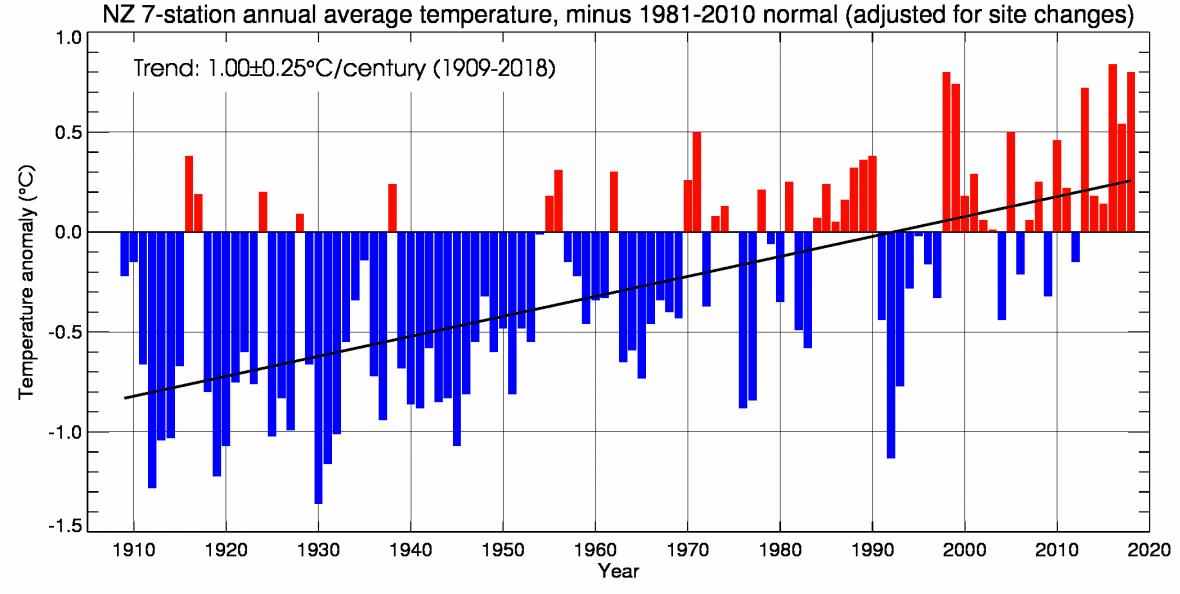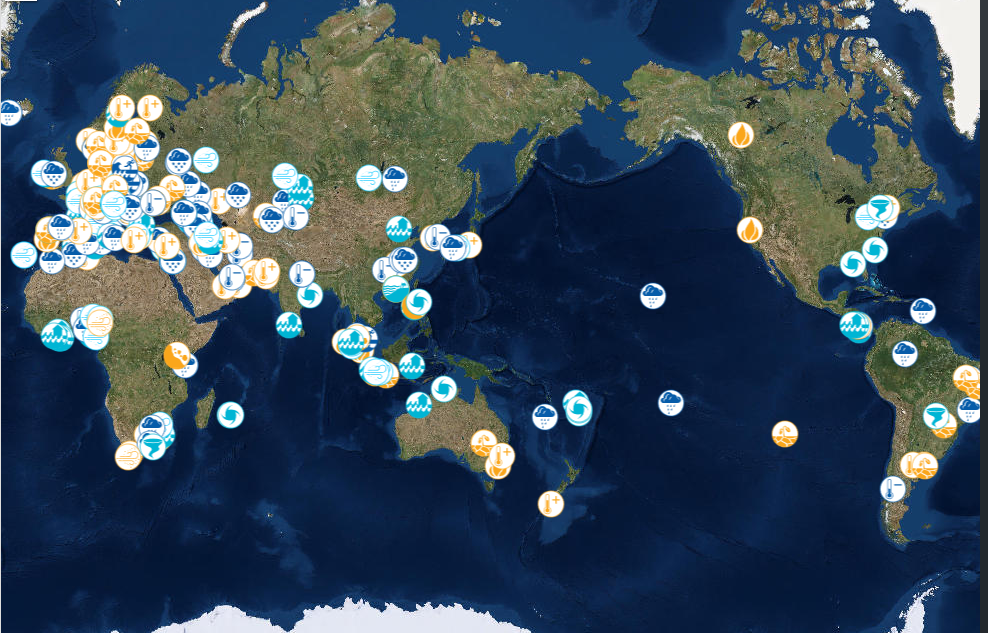The physical signs and socio-economic impacts of climate change are accelerating according to the World Meteorological Organization (WMO).
The statement also covers climate impacts on human populations over the past year, such as at climate hazards, displacements and food security. The WMO also produced an interactive global map showing major weather and climate events for 2018.
The SMC asked experts to comment, feel free to use these comments in your reporting.
Professor James Renwick, climate scientist and Head of the VUW School of Geography, Environment and Earth Sciences, comments:
“Ecosystems are being affected worldwide, on land and in the oceans, where acidification is associated with rising temperatures and loss of dissolved oxygen. The record heat in New Zealand and the Tasman Sea during summer 2017/18 is an example of what we can expect much more of in future years. With no action on climate change, that record warm summer in New Zealand would be counted as a cold summer in another 50 years. The associated increases in climate and weather extremes would displace hundreds of millions and would threaten the fabric of societies everywhere.
“The globe is currently running a temperature of about 1°C above pre-industrial levels. To rein in the warming at no more than 1.5°C above pre-industrial, global emissions need to halve by 2030, and go to zero by 2050. Yet, emissions increased to record levels in 2018! Policy-makers must really take on board that climate change is an existential threat to global society, to the global economy, and to all ecosystems on earth. I hope the planned United Nations Climate Action Summit later this year really galvanises action by governments around the world.”
No conflict of interest.
Gregor Macara, climate scientist, National Institute of Water & Atmospheric Research (NIWA), comments:
“New Zealand is far from immune and has experienced many of the indicators the WMO has concluded are becoming more pronounced globally.
“These include:
- New Zealand’s hottest ever month in January 2018 when the mean temperature was 20.3°C, a remarkable 3.1°C above average
- At New Zealand climate stations over the past six years, for every record or near-record low monthly mean temperature there have been 12 record or near-record highs.
- A hot March this year – higher temperatures than what it’s usually like in mid to late summer.
- Marine heatwaves over the past two summers – likely a contributor to this week’s wettest 48 hours on record.
- A near record 40-day dry spell in Nelson this summer which included significant wildfires.
- 2018 coming in at NZ’s equal-second warmest year on record [see graph].

No conflict of interest.
Professor Jim Salinger, Visiting Scholar, Penn State University, comments:
“It is very alarming that the carbon dioxide levels reaching a highest 406 ppm – up from 280 ppm in the 19th century, and methane jumping unexpectedly by 25 ppb to a record 1850 ppb by 2017.
“The extra 3.7 mm of sea level rise will be very significant for the coast of Australia, and especially New Zealand with its many seaside urban areas and long coasts.
“The record warm summer ending in February 2019 produced the largest ice loss on the Southern Alps glaciers since the regular end of summer snowline surveys started 42 years ago.
“We’ve seen Queensland Groper in the Bay of Islands, Northland, 3000 km out of range, snapper in Milford Sound in Fiordland, and massive mortality in the aquaculture fisheries of the Marlborough Sounds. These are a harbinger of climate in the latter part of the 20th century if we do not take action to reduce emissions from the combustion of fossil fuels and the production of greenhouse gases from other sources such as waste and agriculture immediately.”
Our colleagues at the Australian Science Media Centre also asked experts to comment.
Dr Liz Hanna, Chair of the Environmental Health Working Group at the World Federation of Public Health Associations, and an Honorary Senior Fellow at the Climate Change Institute, The Australian National University, comments:
“Acceleration of warming, of heat extremes, fires, drought, damaging storms and sea level rise sends shivers up the spines of the health sector. These rising climate tragedies spell disaster for human lives, human livelihoods, and our collective health and happiness crumble. The health sector is left to pick up the pieces and try to restore health.
“As individuals, humans have a strong survival instinct, it appears that collectively we do not.”Rich countries are not immune to the damage and misery global warming is starting to deliver. While we watch Cyclone Idai devastate three nations in Africa, Australians are still reeling from two synchronous cyclones across the north, swathes of flood damage across drought-stricken Queensland, with heat fires and droughts sending the southern half of Australia into despair. And all this is accelerating!”Conflict of interest statement: None.
Professor Samantha Hepburn, Director of Research and Director of the Centre for Energy and Natural Resource Law, Deakin University, comments:
“This report makes it very clear that the impacts of climate change are accelerating. We know that if the current trajectory for greenhouse gas concentrations continues, temperatures may increase by 3 – 5 degrees celsius compared to pre-industrial levels by the end of the century and we have already reached 1 degree celsius.
The 20 warmest years on record have been in the past 22 years, 2018 was the fourth warmest year on record, ocean heat content is at a record high, global mean sea levels continue to rise, Arctic and Antarctic ice content have been severely diminished, extreme weather patterns have impacted life in every continent and imperil sustainable practices and global emission reduction targets have not been met.
Clearly, the soft law processes of international law have not been effective in addressing this profound threat to humanity. Domestic regulatory and policy frameworks across the world must take immediate, strong and direct action to stem the growth of global carbon emissions.
In addition to pricing carbon and accelerating the trajectory of renewable energy, there are many multi-dimensional options that may work. These include climate accession agreements, bottom-up approaches, green clubs and strategies grounded in behavioural science.
Responding to climate change is fundamentally a legacy decision. It connects to our global intergenerational
In the words of Obama, ‘Someday our children and our children’s children will look us in the eye and ask us did we do all we could, when we had the chance, to leave a cleaner, safer world? And I want to be able to say yes.”
Conflict of interest statement: None.
